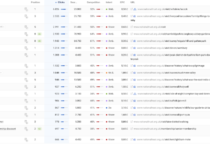How to Grow Your Ecommerce Sales with Omnichannel Personalization
Today, with customer loyalty increasingly difficult to win and attention spans so short they can be measured in milliseconds, the simple act of someone making a purchase from your online store and making one again is no longer about snappy slogans or flash sales. The real magic is when you already know your customers so well, that they feel like you are always in their backyards and offering what they need as soon as they even think about it.
And here is precisely where this chat about omnichannel personalization enters—not as a marketing trend at all, but as a clear competitive necessity!
What Omnichannel Personalization Really Means (and Why Most Brands Get It Wrong)
First off, a good old dusting of the myth that omnichannel personalization means “being on all channels” That’s not enough. Relevance over every touchpoint and being creepily precise about it. Omnichannel individualization is about personalizing your message, content and offer based on what a consumer does, likes, clicks or buys regardless of where that behavior occurs. Website with email, social with SMS, mobile apps even physical retail adding up to a unified experience.
Omnichannel vs. Multichannel: A Necessary Distinction
- Multichannel: Multiple channels exist but don’t communicate. The customer browses on Instagram, but there is no link to email marketing or website forms to continue the journey. It’s like hosting a dinner party where none of your guests speak the same language.
- Omnichannel: Everything is wired together. The customer browses boots on mobile, gets a reminder in their inbox, sees a relevant ad the next day, and maybe even gets a coupon to encourage them to finish their purchase.
It’s not just “everywhere”—it’s “everywhere, thoughtfully.”
Why Omnichannel Personalization Moves the Needle on Sales
Thinking back to the last several years and all the small start-ups, mid-sized businesses, and huge E-commerce brands that I have worked with one common denominator in all of them is that people buy (and return) more when they feel heard.
And that’s exactly what you can do with omnichannel personalization. It’s not about manipulation. It’s about connection.
- Conversion Rates Spike – When the experience aligns to intent, shoppers stop window-shopping and start checking out.
- Customer Lifetime Value Grows – Personalized, real-time communication fosters loyalty and historical purchase.
- Churn Slows Down – Customers who feel understood and valued are not nearly as quick to leave.
- Marketing Efficiency Improves – You are no longer spending in the dark. Everything you do is coordinated, contextualized and backed by data.
- Better Business Decisions – Aggregated insights give you the confidence to operate — not guess.
And if there is one tactic that continually works for my clients, it is this.
Channels That Deserve (and Demand) Personalization
Many brands see channels as a series of to-do lists— “We need to fix our emails,” “We need more on Instagram.” However, your customers do not engage with your brand in fragments. They bounce between channels in search the similar tones, memory, relevance…
Here’s where your attention should be:
| Channel | Real-World Personalization Example |
| Website | Adaptive homepage banners, product suggestions tailored to browsing history |
| Behavior-triggered flows: cart abandonment, re-engagement, post-purchase tips | |
| SMS/Push | Time-sensitive offers based on recent activity, back-in-stock alerts |
| Social Ads | Retargeting based on real-time engagement—products browsed, categories explored |
| Mobile Apps | In-app offers triggered by in-session activity or location |
| In-Store | Offers delivered at checkout based on online behavior or loyalty data |
| Direct Mail | Targeted physical catalogues or promo cards aligned with browsing/purchase history |
Done right, your brand doesn’t just exist on multiple platforms—it adapts, listens, and responds on every single one.
The Data That Fuels Personalization (and How Not to Mess It Up)
We do not mean the creepy Big Brother data — but rather the insights that, when customers give you permission to use them, help you serve your customers better. This is the distinction between guessing and knowing.
Types of Data You Actually Need
- Browsing paths and bounce patterns
- Purchase frequency and preferred items
- Email interaction statistics (opens, clicks, ghosting)
- Social (comments, views, ad clicks)
- Activity in a customer loyalty program and in local stores
How to Make the Most of It
All of this integration is going to require a Customer Data Platform (CDP). Tools like Segment or Klaviyo make it easier to analyze patterns, segment meaningfully, and trigger dynamic responses across channels.
But Wait—Don’t Get Creepy
The line here is when personalization feels invasive. Stay ethical:
- Collect only what’s truly useful
- Be honest about your data practices
- Give people control with easy opt-outs
- Stick to the rules (GDPR, CCPA, and whatever’s next)
Treat their trust like gold—because it is.
Personalization Tactics That Don’t Feel Like Marketing
That means no boring robotic emails or plain Jane pop-ups. The best marketing efforts feel natural, like they’re simply helping you get on with your day.
Here’s what works:
- Product Recommendations – Based on what you’ve viewed recently or purchased: not some moldy old rule book from 1998. It stays relevant.
- Dynamic Landing Pages – Personalized by device, location, or referral source.
- Abandoned Cart Nudges – Gentle, context-rich emails or SMS that remind without annoying.
- Wishlist Alerts – Get automated reminders when any of the stuff you obsessively saved to your Wishlist is back in- stock or goes on sale.
- Personalized Content Feeds – Blog articles, videos, and buying guides built to the reader’s preferences.
- Loyalty Reminders – Not simply reminding “you have points,” but providing recommendations on how to redeem them most effectively.
- Geo-Fenced Promotions – Discounts that only turn on when a person arrives at an exact location.
- Smart Offers – Tiered discounts based on how much they’ve spent or browsed.
This is where science meets art. It’s less about technology—and more about timing, tone, and value.
The Strategy I Use to Roll This Out (Without Losing My Mind)
It’s easy to get overwhelmed when trying to tie it all together. But don’t aim for complexity, aim for clarity. Start simple, scale intentionally.
Below is the step-by-step process I follow when creating omnichannel personalization strategies for clients:
- Map the Journey – What do they see (touchpoint), feel, and do on every point of contact both on-site and off-site?
- Audit the Data – What do you already collect and capture? Where are the gaps?
- Segment Smarter – Not just demographics. Use recency, frequency, and intent.
- Choose Tech That Talks – Integrate platforms that play nice together.
- Create Consistent Messaging – Maintain consistent voice and tonalities of brand, from SMS to store shelf.
- Start Where Impact Is Highest – Usually website and email. Get those right first.
- Automate and Iterate – Set triggers, monitor performance, tweak constantly.
- Stay Transparent – Inform your customers why and how their data is being used to make it all better.
Who’s Doing This Well? Here Are 3 Brands to Learn From
It’s always helpful to look beyond theory. These brands have nailed omnichannel personalization in different ways—and the results speak volumes.
- NA-KD: They were able to increase LTv by 25% and generate an ROI of 72x in 12 months through leveraging customer data across email, site and app. That’s not hype—that’s infrastructure working like it should.
- ASOS: The fashion heavyweight delivers offers in real-time across site, app and ads. It feels like the brand is always a step ahead of what you need.
- Sephora: They blend online and offline with precision. This includes recommendations, AR try-ons, loyalty rewards, and in-store experiences all feel like parts of the same conversation.
The Inevitable Hiccups (And How to Handle Them Like a Pro)
Even the best strategies hit roadblocks. I’ve seen teams with solid plans stumble because they underestimated how messy real-world marketing can be.
Here’s what to watch out for:
- Data Silos: If your platforms don’t talk, fix that first. CDPs and integrations are non-negotiable.
- No Strategy: Campaigns without a journey map just make noise, and not in a good way. You need a narrative.
- Not Enough People: Use automation to do the heavy lifting until you can scale up.
- Customer Fatigue: You can over-communicate so be mindful of what you send to customers and when. Use AI to adjust frequency and relevance.
- Privacy Landmines: Always be clear, seek consent, and offer real control.
- Measuring the Wrong Stuff: Rather than opens and clicks, start measuring repeat purchases, average order value, and lifetime value.
Closing Thoughts: This Isn’t Optional Anymore
Personalization has left the nice-to-have realm. It’s an expectation Companies that listen and adapt, that react quickly will be rewarded the loyalty here while others play catch up.
Start with one channel. Nail the messaging. Learn from the data. And then build on top of it until the user experience is spread across a layer that makes all levels below feel natural and real choreography of service.
If I’ve learned one thing, it’s this: Put the customer at the center. Every message, every click, every time.
FAQs
1. What is omnichannel personalization?
It’s the practice of using unified data to create consistent, relevant experiences for your customers—across all platforms, digital and physical.
2. How does it improve sales?
It eliminates friction, improves conversion rates, and nurtures greater trust between businesses and their customers.
3. What’s the difference between omnichannel and multichannel?
Multichannel = disconnected experiences. What we are alluding to by way of omnichannel = connected, related, and customer-centric journeys.
4. What tools do I need to get started?
- CDPs (e.g., Segment, Klaviyo)
- Personalization engines (e.g., Nosto, Dynamic Yield)
- Automation tools (e.g., HubSpot, Customer.io)
- Analytics platforms (e.g., GA4, Mixpanel)
5. Is this only for large businesses?
Not at all. With the right stack and focus, small brands can begin personalizing with just email and web—and grow from there.
The post How to Grow Your Ecommerce Sales with Omnichannel Personalization appeared first on Aumcore.


